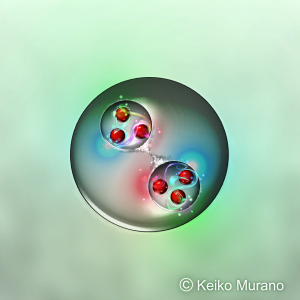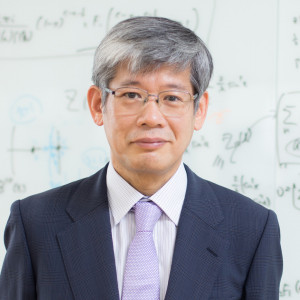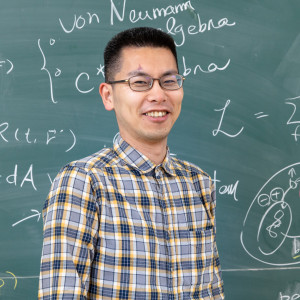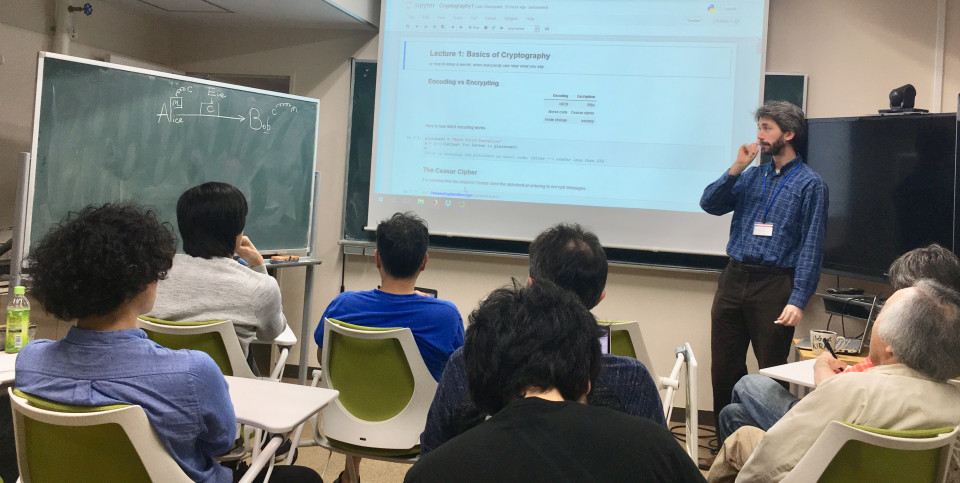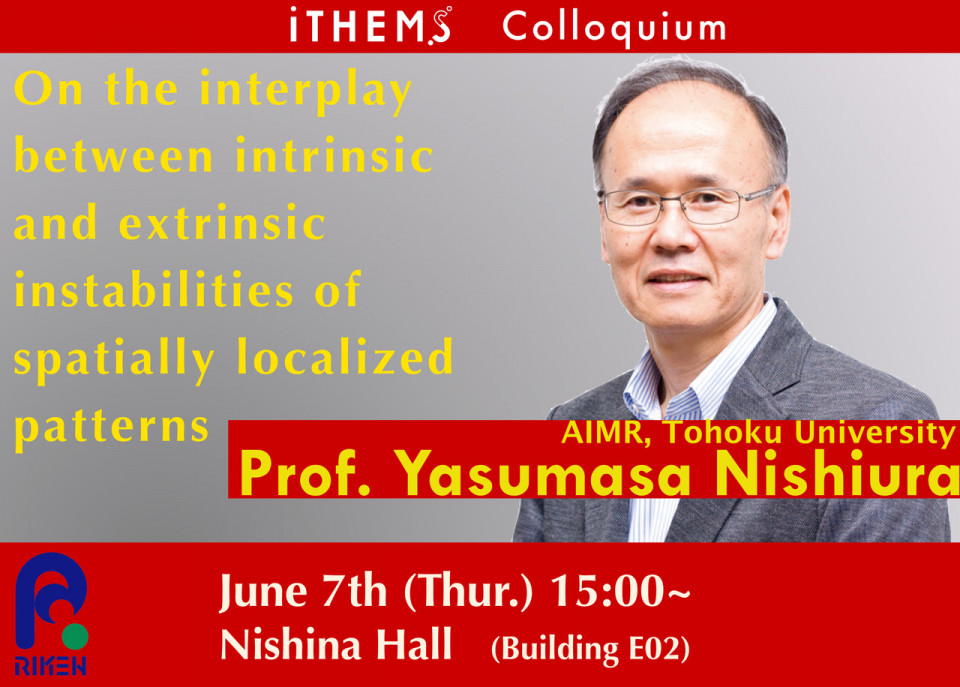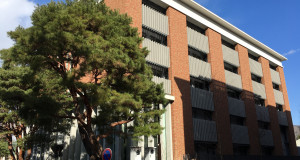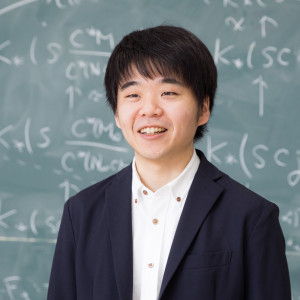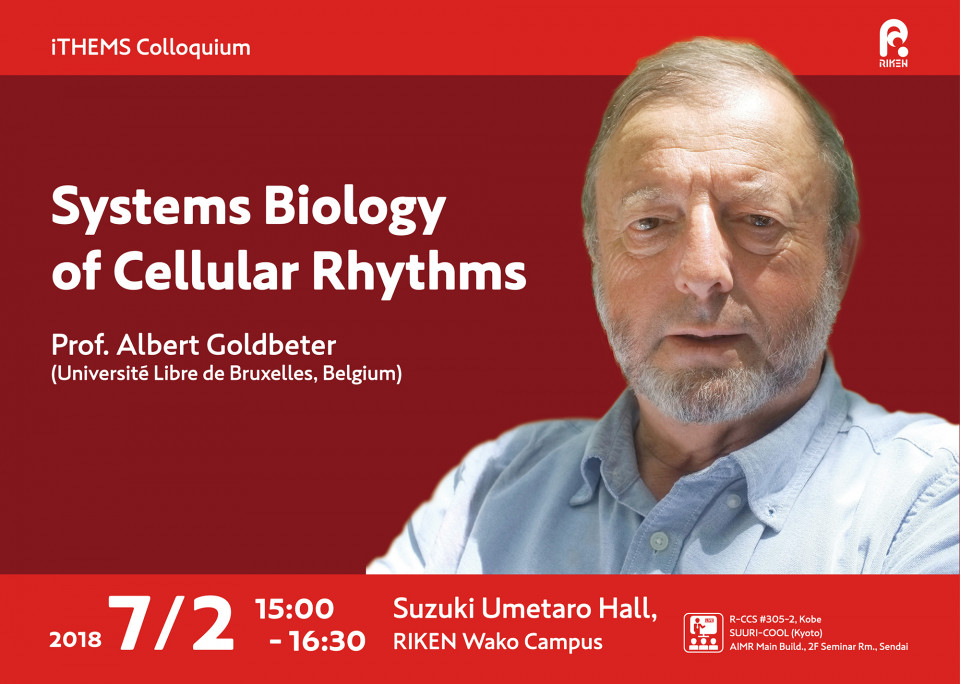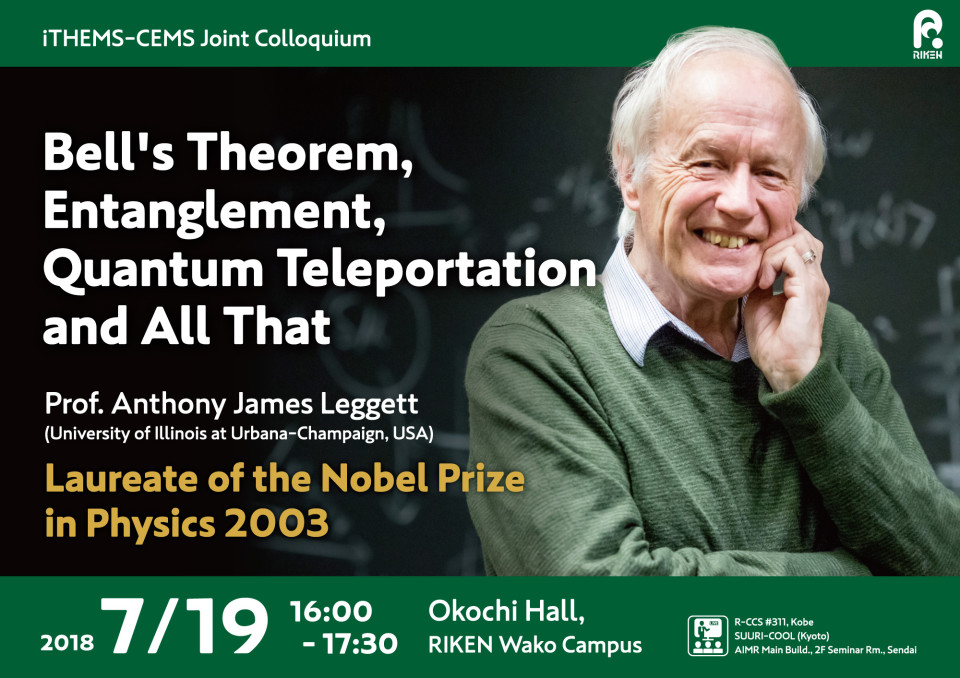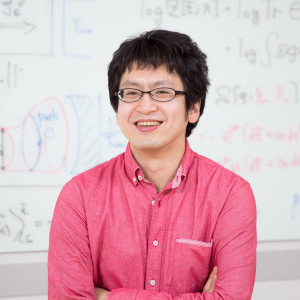Volume 7
Back to Newsletter List
Press Release
Using the K computer, scientists predict exotic “di-Omega” particle
2018-05-24
Based on complex simulations of quantum chromodynamics performed using the K computer, one of the most powerful computers in the world, the HAL QCD Collaboration, made up of scientists from the RIKEN Nishina Center for Accelerator-based Science and the RIKEN Interdisciplinary Theoretical and Mathematical Sciences (iTHEMS) program, together with colleagues from a number of universities, have predicted a new type of “dibaryon”—a particle that contains six quarks instead of the usual three. Studying how these elements form could help scientists understand the interactions among elementary particles in extreme environments such as the interiors of neutron stars or the early universe moments after the Big Bang.
Reference
- Shinya Gongyo, Kenji Sasaki, Sinya Aoki, Takumi Doi, Tetsuo Hatsuda, Yoichi Ikeda, Takashi Inoue, Takumi Iritani, Noriyoshi Ishii, Takaya Miyamoto, and Hidekatsu Nemura (HAL QCD Collaboration), Most Strange Dibaryon from Lattice QCD, Phys. Rev. Lett. 120, 212001 (2018), doi: 10.1103/PhysRevLett.120.212001
Upcoming Events
Workshop
iTHEMS Science Outreach Workshop 2018
June 1 (Fri) - 4 (Mon) 2018
This is a workshop in which researchers in natural and mathematical sciences and the science journalists get together and discuss outreach activities. iTHEMS started to support this annual workshop as well as the journalist in residence program from last year to establish better science communication.
Contact: Takashi Tsuboi (iTHEMS Deputy Director)
Venue: Tambara Institute of Mathematical Sciences, The University of Tokyo
Event Official Language: Japanese
Math Lecture
Introduction to Public-Key Cryptography
Introduction to Public-Key Cryptography Lecture 4: RZSA encryption
June 7 (Thu) 10:30 - 12:00, 2018
Eren Mehmet Kıral (Visiting Researcher, RIKEN Center for Advanced Intelligence Project (AIP))
Venue: Seminar Room #160, 1F Main Research Building, RIKEN
Event Official Language: English
Colloquium
iTHEMS Colloquium
On the interplay between intrinsic and extrinsic instabilities of spatially localized patterns
June 7 (Thu) 15:00 - 16:30, 2018
Yasumasa Nishiura (Professor, Advanced Institute for Materials Research (AIMR), Tohoku University)
Spatially localized dissipative structures are observed in various fields, such as neural signaling, chemical reactions, discharge patterns, granular materials, vegetated landscapes, binary convection and block copolymer nanoparticles. These patterns are much simpler than single living cells, however they seem to inherit several characteristic “living state” features, such as generation of new patterns, self-replication, switching to new dynamics via collisions and adaptive morphological changes to environments. These behaviors stem from an interplay between the intrinsic instability of each localized pattern and the strength of external signals. To understand such an interplay, we explore the global geometric interrelation amongst all relevant solution branches of a corresponding system with approximate unfolding parameters. For instance, it has been uncovered that large deformation via strong collision is mapped into the network of unstable patterns in infinite dimensional space, and that an organizing center for 1D pulse generators is a double homoclinicity of butterfly type. Large deformation of patterns is unavoidable so that a global geometric structure formed by all relevant solution branches gives us much more insight rather than conventional PDE approaches. We illustrate the impact of this approach for the case of pulse generators. We also report on the recent exciting finding, namely the formation of exotic 3D nanoparticles of block copolymers caused by the interplay between internal repulsion and affinity to external solvent, which is consistent with experimental results.
Venue: Nishina Hall, 2F Nishina Building, RIKEN
Broadcast: #305-2, Computational Science Research Building, R-CCS, Kobe Campus, RIKEN / SUURI-COOL (Kyoto), Room 204-205, 2F Maskawa Building for Education and Research, North Campus, Kyoto University
Event Official Language: English
Seminar
STAMP SeminarSUURI-COOL (Kyoto)
1-form Lieb-Schultz-Mattis theorem and anomaly matching in quantum dimer model
June 8 (Fri) 13:30 - 17:00, 2018
Yuta Kikuchi (RBRC Researcher, Theory Group, RIKEN BNL Research Center, RIKEN Nishina Center for Accelerator-Based Science (RNC))
The Lieb-Schultz-Mattis theorem dictates that a trivial symmetric insulator in lattice models is prohibited if lattice translation symmetry and U(1) charge conservation are both preserved. In this talk, we discuss the generalization of the Lieb-Schultz-Mattis theorem to systems with higher-form symmetries, which act on extended objects of dimension n > 0. The prototypical lattice system with higher-form symmetry is the pure abelian lattice gauge theory whose action consists only of the field strength. We first construct the higher-form generalization of the Lieb-Schultz-Mattis theorem with a proof. We then apply it to the U(1) lattice gauge theory description of the quantum dimer model on bipartite lattices. Finally, using the continuum field theory description in the vicinity of the Rokhsar-Kivelson point of the quantum dimer model, we diagnose and compute the mixed ’t Hooft anomaly corresponding to the higher-form Lieb-Schultz-Mattis theorem.
Event Official Language: Japanese
Math Lecture
Theory of Operator Algebras
Theory of Operator Algebras (2nd)
June 21 (Thu) 15:30 - 17:00, 2018
Yosuke Kubota (Research Scientist, RIKEN Interdisciplinary Theoretical and Mathematical Sciences Program (iTHEMS))
Please note that the date and time of the 2nd lecture has been changed from May 21 10:30 to June 21 15:30.
Venue: Seminar Room #160, 1F Main Research Building, RIKEN
Event Official Language: English
Math Lecture
Computational Algebraic Statistics and its Applications
June 26 (Tue) 10:00 - 16:30, 2018
Satoshi Aoki (Professor, Department of Mathematics, Kobe University)
Lecture 1 (10:00-11:30)
An introduction of Groebner bases of polynomial rings
Lecture 2 (13:00-14:30)
Groebner bases theory in design of experiments
Lecture 3 (15:00-16:30)
Groebner bases theory in sampling problems of contingency tables
This introductory lecture is about statistical theory from the point of view of the computational algebraic statistics, in particular the applications of Groebner bases. The statistical theory is a fundamental tool in natural science, social science and humanities, and the Groebner basis is a topic related to multi-variable polynomials. The Lecture will start from an introduction to the Groebner basis which would have wide applications in mathematics, physics, biology, chemistry, engineering, information science and computer science. Therefore, we welcome scientists in any field who are interested in this subject.
The event official language is Japanese (slides and writing are in English).
Venue: #535-537, 5F, Main Research Building, RIKEN Wako Campus
Event Official Language: Japanese
Colloquium
iTHEMS Colloquium
Systems Biology of Cellular Rhythms
July 2 (Mon) 15:00 - 16:30, 2018
Albert Goldbeter (Professor, Unit of Theoretical Chronobiology, Faculty of Sciences, Université Libre de Bruxelles, Belgium)
Rhythmic phenomena occur at all levels of biological organization, with periods ranging from milliseconds to years. Among biological rhythms, circadian clocks, of a period close to 24h, play a key role as they allow the adaptation of living organisms to the alternation of day and night. Biological rhythms represent a phenomenon of temporal self-organization in the form of sustained oscillations of the limit cycle type. Mathematical models show how the emergent property of oscillatory behavior arises from molecular interactions in cellular regulatory networks, which explains why cellular rhythms represent a major research topic in systems biology. After providing an introduction to biological rhythms and their modeling, I will focus on mathematical models for two major examples of rhythmic behavior at the cellular level : the circadian clock and the cell cycle. The coupling of these rhythms allows for their synchronization and for the occurrence of more complex patterns of oscillatory behavior. I will discuss the reasons why models for cellular rhythms tend to become more complex, upon incorporating new experimental observations. The case of cellular rhythms allows us to compare the merits of simple versus complex models for the dynamics of biological systems.
Venue: Suzuki Umetaro Hall, 1F Bioscience Building, RIKEN
Broadcast: #305-2, Computational Science Research Building, R-CCS, Kobe Campus, RIKEN / SUURI-COOL (Kyoto), Room 204-205, 2F Maskawa Building for Education and Research, North Campus, Kyoto University / 2F Seminar Room, AIMR Main Building, Advanced Institute for Materials Research (AIMR), Tohoku University
Event Official Language: English
Math Lecture
Theory of Operator Algebras
Theory of Operator Algebras (3rd)
July 12 (Thu) 15:30 - 17:00, 2018
Yosuke Kubota (Research Scientist, RIKEN Interdisciplinary Theoretical and Mathematical Sciences Program (iTHEMS))
Venue: Seminar Room #160, 1F Main Research Building, RIKEN
Event Official Language: English
Colloquium
iTHEMS Colloquium
Bell's Theorem, Entanglement, Quantum Teleportation and All That
July 19 (Thu) 16:00 - 17:30, 2018
Anthony James Leggett (Professor, University of Illinois at Urbana-Champaign, USA)
iTHEMS-CEMS Joint Colloquium.
Professor Leggett is widely recognized as a world leader in the theory of low-temperature physics, and his pioneering work on superfluidity was recognized by the 2003 Nobel Prize in Physics.
Abstract:
One of the most surprising aspects of quantum mechanics is that under certain circumstances it does not allow individual physical systems, even when isolated, to possess properties in their own right. This feature, first clearly appreciated by John Bell in 1964, has over the last half-century been tested experimentally and found (in most people's opinion) to be spectacularly confirmed. More recently it has been realized that it permits various operations which are classically impossible, such as "teleportation" and secure-in-principle cryptography.
This talk is a very basic introduction to the subject, which requires only elementary quantum mechanics.
Venue: Okochi Hall, 1F Laser Science Laboratory, RIKEN
Broadcast: #311, Computational Science Research Building, R-CCS, Kobe Campus, RIKEN / SUURI-COOL (Kyoto), Room 204-205, 2F Maskawa Building for Education and Research, North Campus, Kyoto University / 2F Seminar Room, AIMR Main Building, Advanced Institute for Materials Research (AIMR), Tohoku University
Event Official Language: English
Person of the Week
Self-introduction: Masaru Hongo
2018-05-28
I am Masaru Hongo, a theoretical physicist working on nonequilibrium physics. My main interest is hydrodynamics and its possible generalizations to more general nonequilibrium systems. Hydrodynamics universally describes a lot of phenomena seen in the world. Its application covers not only simple liquids in our daily life, but also the extremely high temperature plasma (the so-called quark-gluon plasma which reaches at several trillion Kelvin). Since our fluid is composed of atoms/molecules, or extremely elementary particles described by quantum theory, it is interesting to consider how we can understand the gap between two descriptions. I have studied to bridge this gap between hydrodynamics, which gives a macroscopic description of systems, and quantum field theories, which is a fundamental microscopic theory considered to be state-of-the-art atomism. Based on the recent development of non-equilibrium statistical mechanics, I have provided a solid basis for relativistic hydrodynamics. I am now working on how we can describe the more general nonequilibrium systems. I am happy if we are interacting with each other, and have fruitful collaborations!
If you would like to cancel your subscription or change your email address,
please let us know via our contact form.
Copyright © iTHEMS, RIKEN. All rights reserved.


